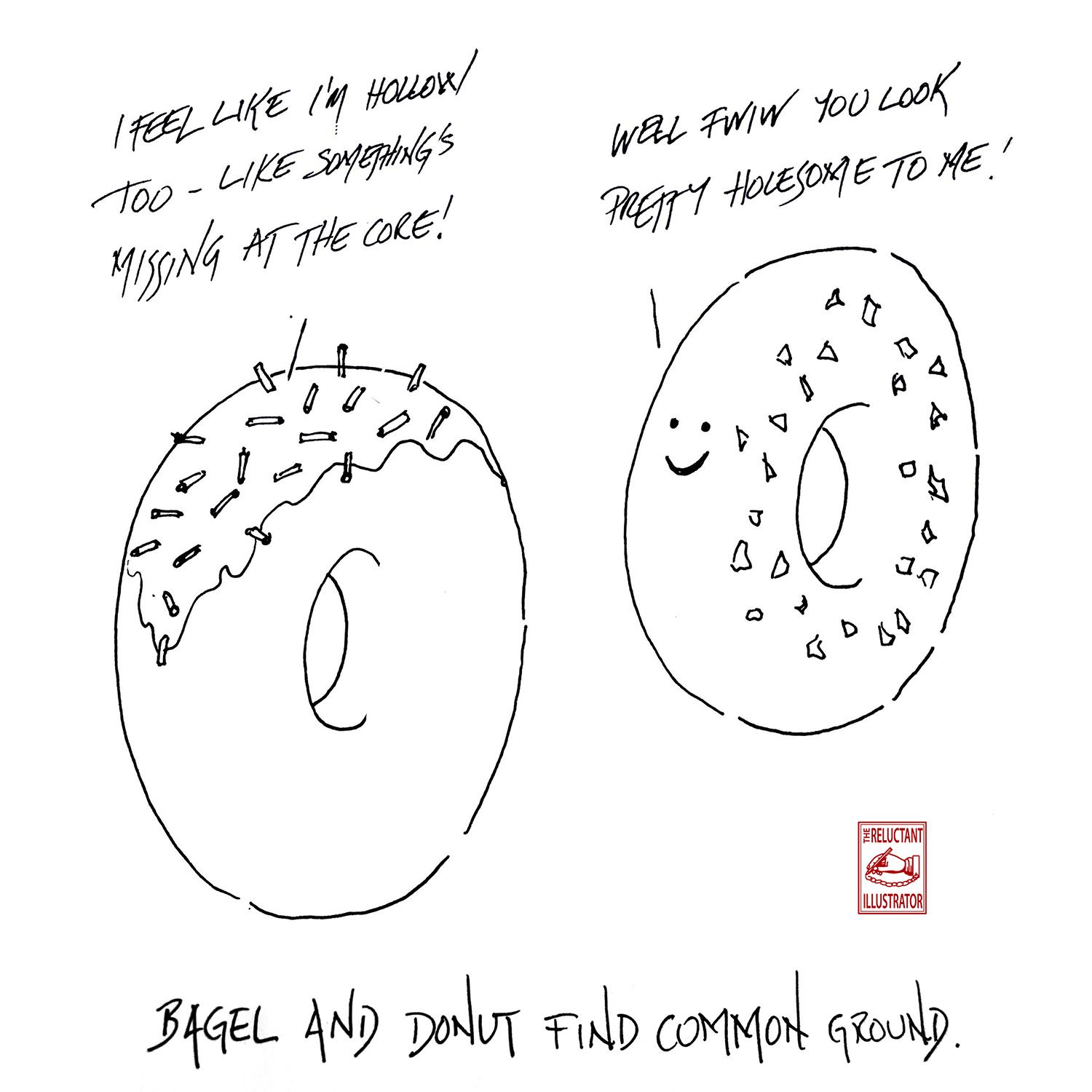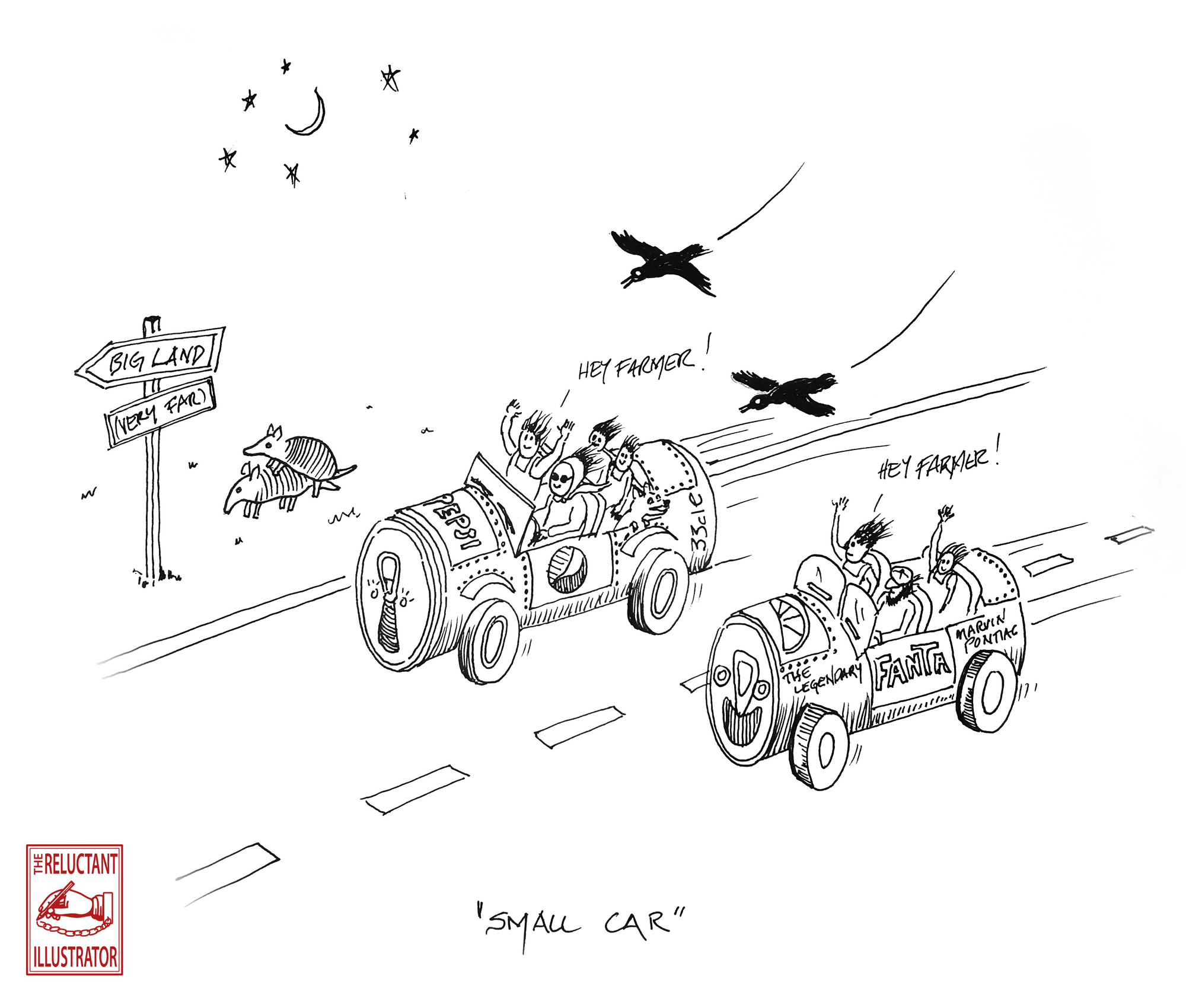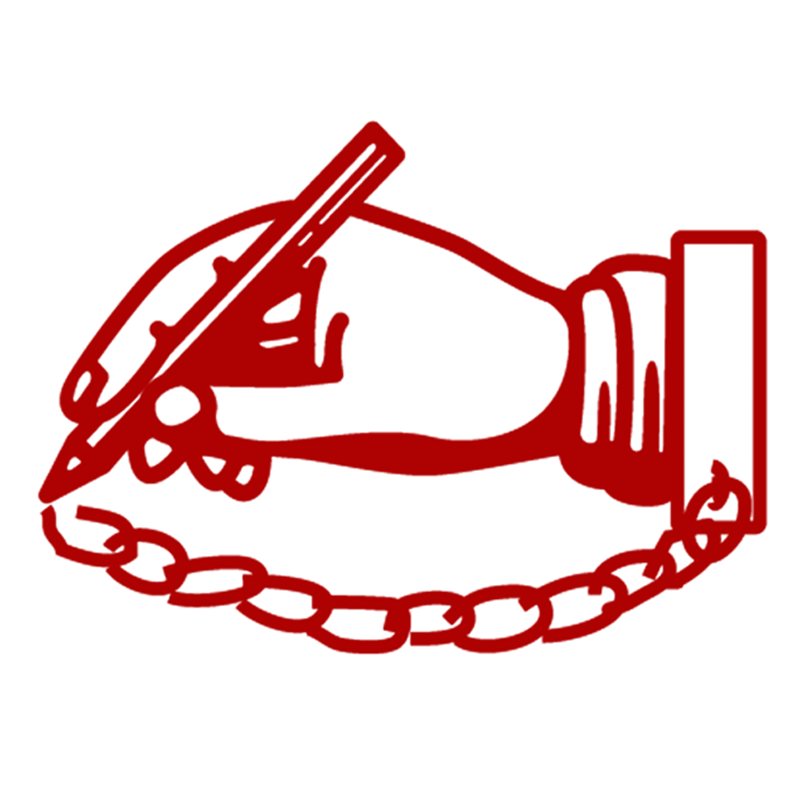back seat driver

Looming brick walls notwithstanding, it can sometimes be hard to tell who is actually doing the driving as we make our way forward. We are driven by so many things and at times it can get hard to tell where the turn signals are actually coming from.
Who's zooming who?
I began to be more cognizant of the systemic and manufactured nature of a fearful society through the 2004 documentary The Power of Nightmares by Adam Curtis. It's a twisty journey that follows two opposing tracks of The War on Terror and articulates how the mechanics of fear are a more reliable method of societal control – and how it replaced the less effective, opt-in model of Desire and the Dream, which Curtis explored earlier in the documentary The Century of the Self.. The co-opting of human desire by market forces.
I date myself with such antique references, yet for me, they offered new ways of seeing what was going on around me at the time. Irrespective of the specific merits or flaws in the documentaries, they got me reflecting on the social fabric – particularly about the nature of our social agreements and the powerful and hidden levers of emotional manipulation at work, both individual and collective.

insecurity
Coming back to the present, I read a great opinion piece in the NYT by another documentary filmmaker, Astra Taylor, who made the documentaries Examined Life, 2008 and What Is Democracy?, 2018. The essay explores our insecurities, beyond the innate existential ones, and digs into what she calls 'Manufactured Insecurities'...
Why Does Everyone Feel So Insecure All the Time?
A kind of existential insecurity is indelible to being human. It stems from being dependent on others for survival; from being vulnerable to physical and psychological illness and wounding and the looming fact of death. It is a kind of insecurity we can never wholly escape or armor ourselves against, try as we might.
But existential insecurity is not my focus here. The ways we structure our societies could make us more secure; the way we structure it now makes us less so. I call this “manufactured insecurity.” Where existential insecurity is an inherent feature of our being — and something I believe we need to accept and learn from — manufactured insecurity facilitates exploitation and profit by waging a near constant assault on our self-esteem and well-being.
In different ways, political philosophers, economists and advertising executives have pointed out how our economic system capitalizes on the insecurities it produces, which it then prods and perpetuates, making us all insecure by design. Only by reckoning with how deep manufactured insecurity runs will it become possible to envision something different.
Insecure by design – that's a different application of design thinking... it certainly has a significant UX aspect to it.
In the face of mounting insecurities for us all, and the looming spectre of Disaster Capitalism – as Naomi Klein says Information is Shock Resistance. Arm Yourself. It was a good read for me, and I wanted to share - here's the article:

It's great to get to know our own backseat drivers and get friendly with them – and even invite them up to the front seat... as a colleague in the Brainstorm Road creative cohort offered:
I invite mine to sit shotgun, keep quiet, and don’t touch the radio.
As we get to know them, and they get to trust us, maybe they'll just be happy riding in the backseat...

Drive on!
...and while you're in the groove, a small drawing made for The Legendary Marvin Pontiac's great song "Small Car"

As always, thanks for reading – and for indulging!

Member discussion